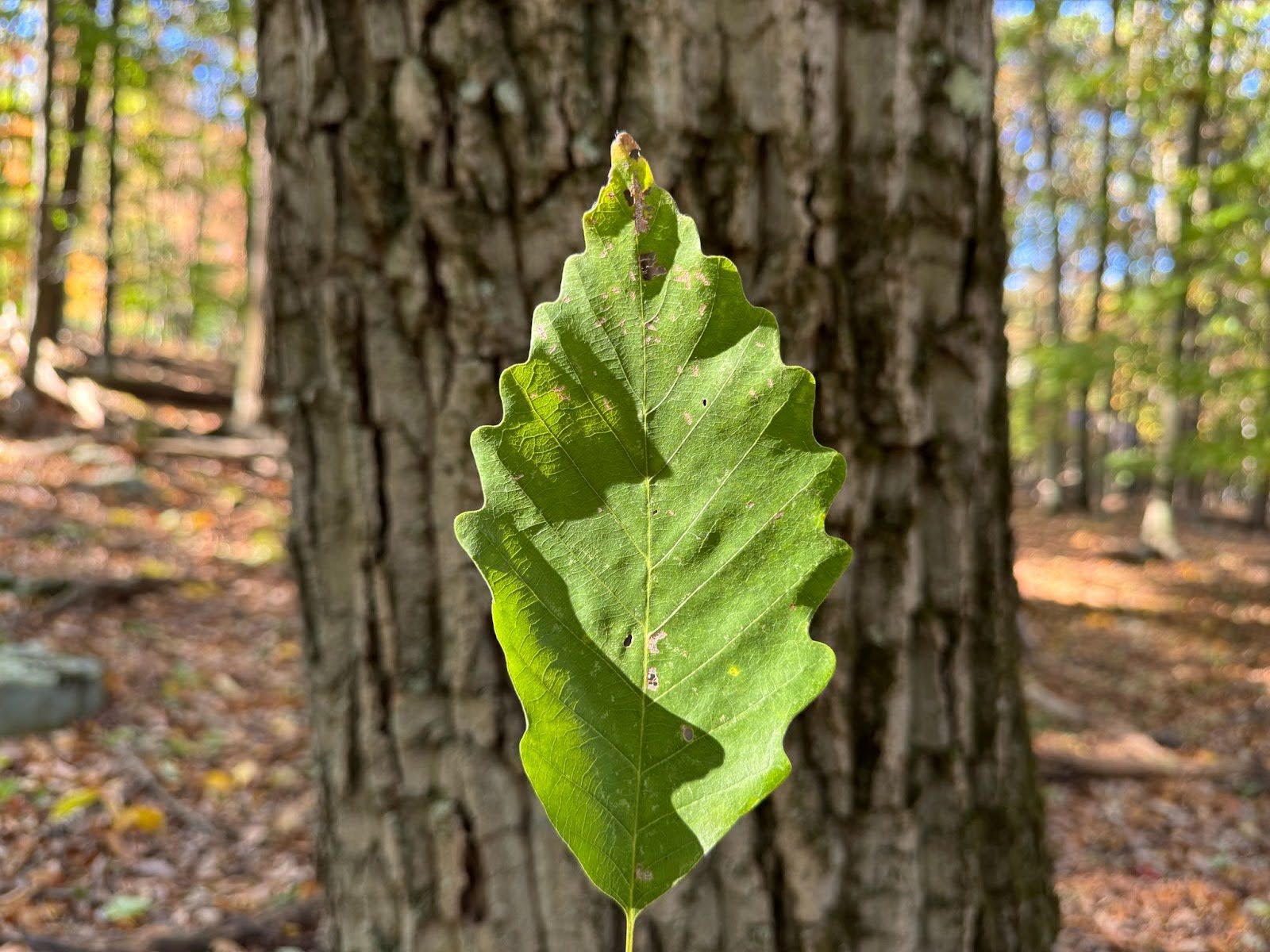Thanks to the work of Dr. Doug Tallamy and his lab of ecologists, oaks have become all the rage. Before the publication of his book, The Nature of Oaks, I knew I most enjoyed wandering through oak-dominated forests, but after I read his research, I understood why. When it comes to attracting and supporting biodiversity in the United States, oaks reign supreme. They support a diversity of insect life, which in turn feeds all kinds of other critters like birds, mammals, and even amphibians. If you’re considering planting an oak tree but are unsure about which species might be the best for your property’s conditions, this guide to native oak trees in PA will help guide you in the right direction. This list is based on species that are native to eastern Pennsylvania.
Generally speaking, oaks mostly fit into one of three categories: those that like wetter environments, those that prefer dry conditions, and the adaptive generalists.
WATER-LOVING OAKS
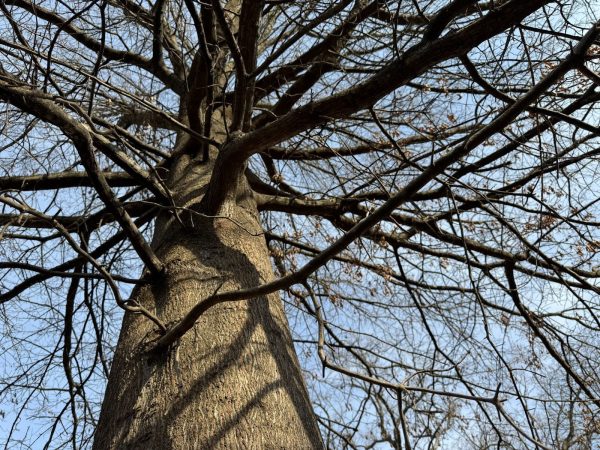
Pin Oak is an easily distinguishable, fast-growing, and fairly common oak species in Pennsylvania. They have several distinguishing characteristics, but one that stands out is their drooping branches, which tend to be numerous throughout the length of the trunk. Their abundance of branches not only provides birds and other critters with places to hide and forage, but it can also provide a bit of privacy for landowners during the summer months, particularly while the tree is still young. This tree will make a great addition to any sunny, wet areas you might have on your property.
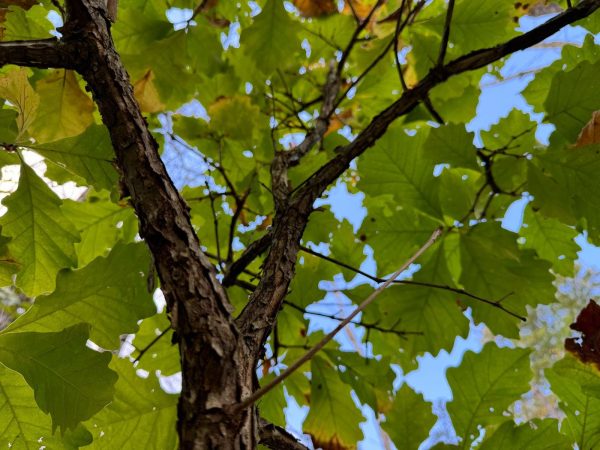
Swamp White Oak is another common, water-loving oak species. They can be a little tricky to distinguish from White Oak (Quercus alba), which we’ll discuss later, but a few things to look out for are the flaky, peeling branches and the lower half of the leaves, which tend to lack lobes and instead have straight edges that meet at a point on the petiole. Swamp White Oaks are also the only local oak whose acorns are borne on long stalks, which is helpful during mast years. As its name suggests, this species is typically found in swampy environments. Similar to the aforementioned Pin Oak, consider adding Swamp White Oak to your property if you have a sunny, wet spot you’d like to plant. An added benefit to planting this species is that they grow relatively quickly. Most oaks grow slow and steady, but Swamp White Oaks often have a pep in their step.
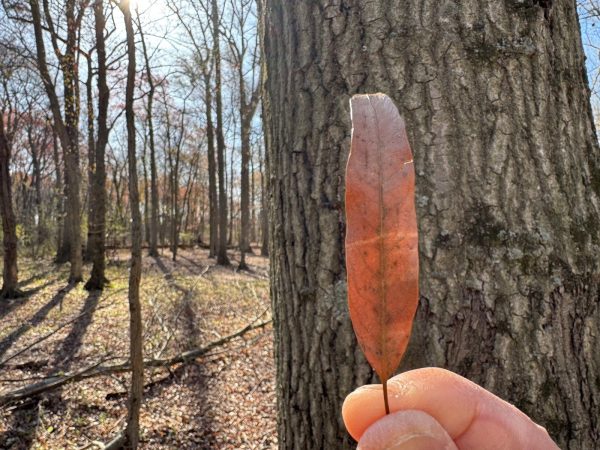
Willow Oak is by far the least common oak mentioned in this article and is actually listed as endangered in Pennsylvania. Its common name is derived from the resemblance that its leaves have to those of Willows (Salix spp). Also similar to willows, Quercus phellos loves to grow in wet areas like floodplains and along waterways. If you have a sunny, moist area on your property and both Pin Oak and Swamp White Oak are too common for your exquisite taste, consider planting some Willow Oaks. You’ll not only be doing local wildlife a solid, but you’ll also be adding a rare plant (in Pennsylvania) that might have been more numerous in the past.
Of course, if you have enough soggy space available, consider adding all three of these gems! Now, let’s continue with our guide to native oak trees in PA as we highlight some oaks high up on the hillside, towering over all of the Pin, Swamp White, and Willow Oaks below.
UPLAND OAKS FOR DRIER CONDITIONS
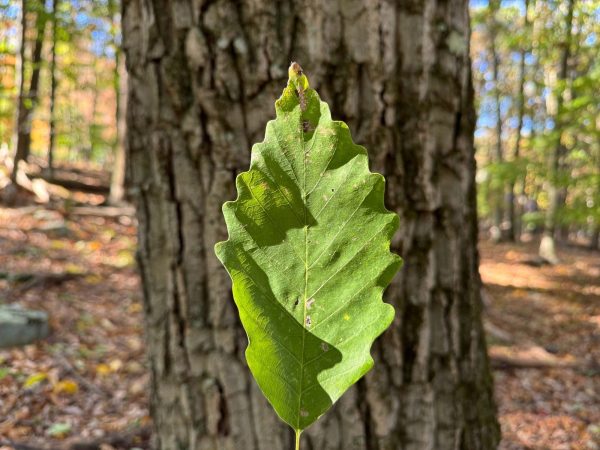
Chestnut Oak, as its scientific name implies, is an oak of the mountains. They’re by no means restricted to mountains, as they’re commonly found in drier sites throughout the piedmont of Pennsylvania. Their leaf shape, which possesses multiple shallow lobes, resembles that of a Chestnut leaf (hence the name), but each lobe is rounded instead of pointed. The real standout attribute of this tree is its bark. The large, blocky texture and the red stripes running in between the sets of plates make this tree appear particularly armored. If you’re fascinated by bark, and your property is more xeric (very dry) than mesic (moderate supply of moisture), consider adding some Chestnut Oaks to your property.
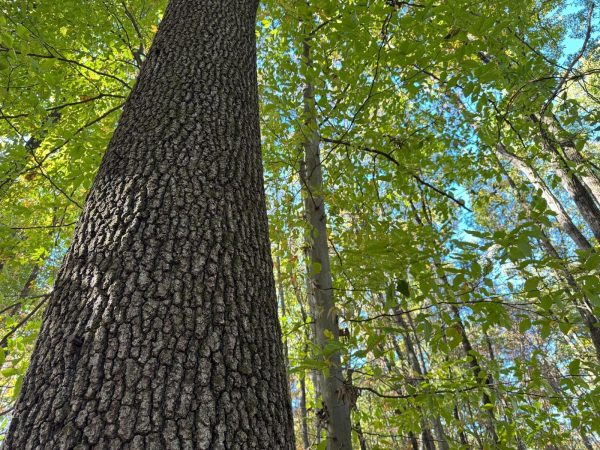
Black Oak is a species that tends to get overlooked. It’s not because they’re difficult to spot, as they can grow to be very large, but rather because of the difficulties in identifying them because cues to do so can be obscure. The inner bark of Black Oak is yellow, and the buds are covered in dense hairs, but those features can be difficult to appreciate. In any case, this species is an important denizen of our upland forests, and it would make a great addition to any site on the drier side.
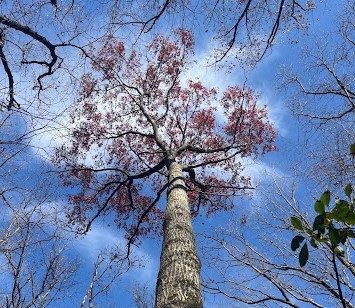
Scarlet Oak is probably the least common of the oaks I’m covering in this article, aside from the Willow Oak. They most resemble Pin Oaks but lack the lower drooping branches and are mostly found on harsher, drier sites. The “scarlet” bit of their common name is in reference to the brilliant red foliage they display every autumn. In some areas, Scarlet Oak is planted as a street tree, but even so, I’d love to see more of these out in the landscape. If you’re yearning to add an oak or two to your property and have a well-drained spot with full sun, consider adding this showstopper.
Again, the more diversity, the better! If you have the means and space to add Chestnut, Black AND Scarlet Oak, please do so! The squirrels, birds, and caterpillars will all be thankful.
ADAPTABLE GENERALISTS
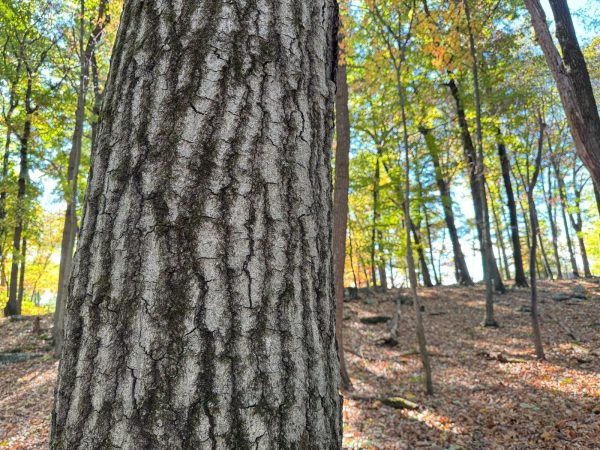
Northern Red Oak is among the most eye-catching oaks, or any tree for that matter. They’re very large, impressive trees with long red fissures that typically run the length of the trunk. This species is most often found on wooded slopes, but is it adaptable to different conditions. They seem to prefer cooler, more moderate conditions, so they tend to grow best on northern-facing slopes with rich, well-drained soil. I’ve found this species in just about every environment, though, from swampy lowlands to ridgetops on the Appalachian Mountains. If you’re looking for a dependable oak that will impress the neighbors, this might be the one for you.
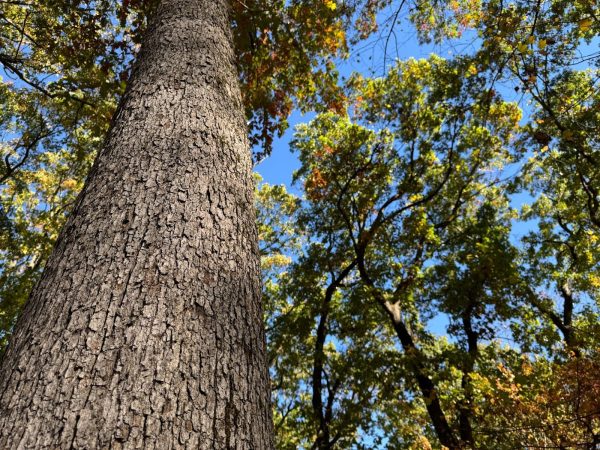
White Oak is a long-lived, mighty tree with unparalleled ecological value. They produce acorns that are readily devoured by birds and mammals and serve as a host plant to several hundred species of caterpillar. This is a slow grower, but one that can exist for upwards of 500 years. Like the Northern Red Oak, I’ve seen this species thriving in just about every environment. Whether it be alongside the Timber Rattlesnakes in the mountains or with the Wood Ducks in the swamp, White Oak can make it work.
IN CLOSING
An important caveat to planting oaks is that they all require sunlight. They won’t tolerate shade the way a Sugar Maple or American Beech will, so if you’d like to add some oaks to your space, be sure to put them in an area with at least some amount of sunlight. The more sunlight, the better. One surefire way to leave a lasting, positive impact on our planet is to plant an oak tree using this guide to native oak trees in PA. It will require some patience, protection from deer, and an acceptance that you won’t get to see it in its mightiest form, but as the Greek proverb goes: “A society grows great when old men plant trees in whose shade they may never sit.”
Sebastian Harris, Conservation Easement Steward
